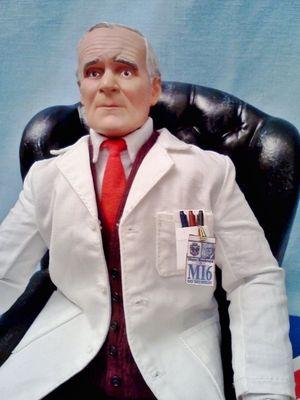THE ANSWER IS STILL Q
September 17, 2018
A few years ago I worked as an acting chief architect for an organization, which started a new thinking journey for me regarding architecture and architecture practice. After that, I have supported several organizations in their try to create a working architecture practice.
Usually, the teams of architects I meet have big problems in defining what architecture is.
- What shall we produce and in what format? Tell us!
I usually reply: – I don’t have the answer, you have! It is simple..
Only create architecture that makes sense
My first message is always that we must focus 110% on what really makes sense.
– The architecture has to make sense, I repeated in all discussions. To me, that’s a simple truth.
Well, it usually doesn’t turn out to be that simple. It is hard to define what makes sense without a clear context. So, I continue my pedagogical journey. What is the context for architecture that makes sense?
Architecture only makes sense in the context of change
The next is therefore to discuss change processes.
– What change processes do we have?
The discussions usually lead to the conclusion that the following processes are present as objects for architectural focus, where we can make positive sense:
- Projects
- System Maintenance Assignments
- Procurement
- Pre-study Assignments
- Supplier hearings
- Strategy process
- System Maintenance Planning
The next step in a pedagogical discussion about architecture that makes sense is to discuss how to get architecture integrated in these change processes and with what architecture we can make sense.
To my surprise, the discussion often doesn’t get easier. After some thinking, I have landed in the next pedagogical movement on the road to architecture that makes sense.
Architecture only makes sense if supporting quality fulfillment in change processes
The best starting point is to discuss and identify what quality parameters are stated or should be expected from the results of the change processes? That’s the question that will straightforward lead us to the answers of what architecture to produce, what architecture makes sense.

Figure: The foundation for any architecture artifact is the quality expected from change processes
The work to define the quality parameters is always interesting.
During the discussions about quality, I have stumbled into a world of different views of what quality perspectives architecture shall aim towards. I remember one situation, the expert consultant  in System Maintenance Management and IT Governance suddenly in a meeting about quality as a driver for architecture asked; Do you mean that the architecture shall make the process more efficient, not only a better design? My answer was YES. I was glad that he responded that way because I then realize that the view of architecture purpose isn’t as obvious as I thought.
in System Maintenance Management and IT Governance suddenly in a meeting about quality as a driver for architecture asked; Do you mean that the architecture shall make the process more efficient, not only a better design? My answer was YES. I was glad that he responded that way because I then realize that the view of architecture purpose isn’t as obvious as I thought.
Quality related to a change process can on a high level be summarized as: Delivery of expected solution on time and on budget. That’s #1 for the architecture team to focus on. This takes the architecture down to earth. Upon that, the classical parameters, or principles like maintainability, flexibility to change, long-term TCO and so forth, of course, will be there to align with. Sometimes as a clear quality requirement from the change process. Sometimes as generic principles for design.
So simply; The answer is Q
The James Bond character Q, the Quartermaster, would have been a perfect member in my architecture team.. not as a pure inventer, but as a pro-active thinker preparing his agents to deliver quality, even in situations they couldn’t imagine themselves
The spelling of architecture from now on should be..


 English | EN
English | EN 